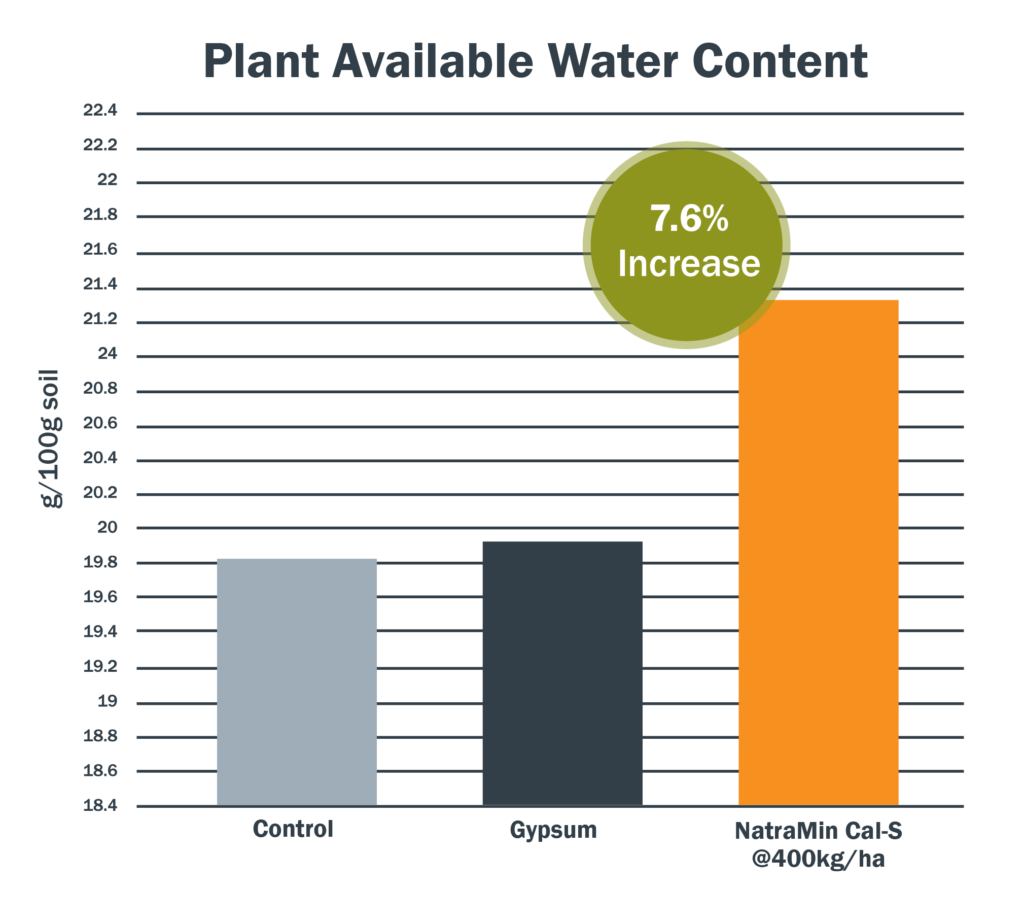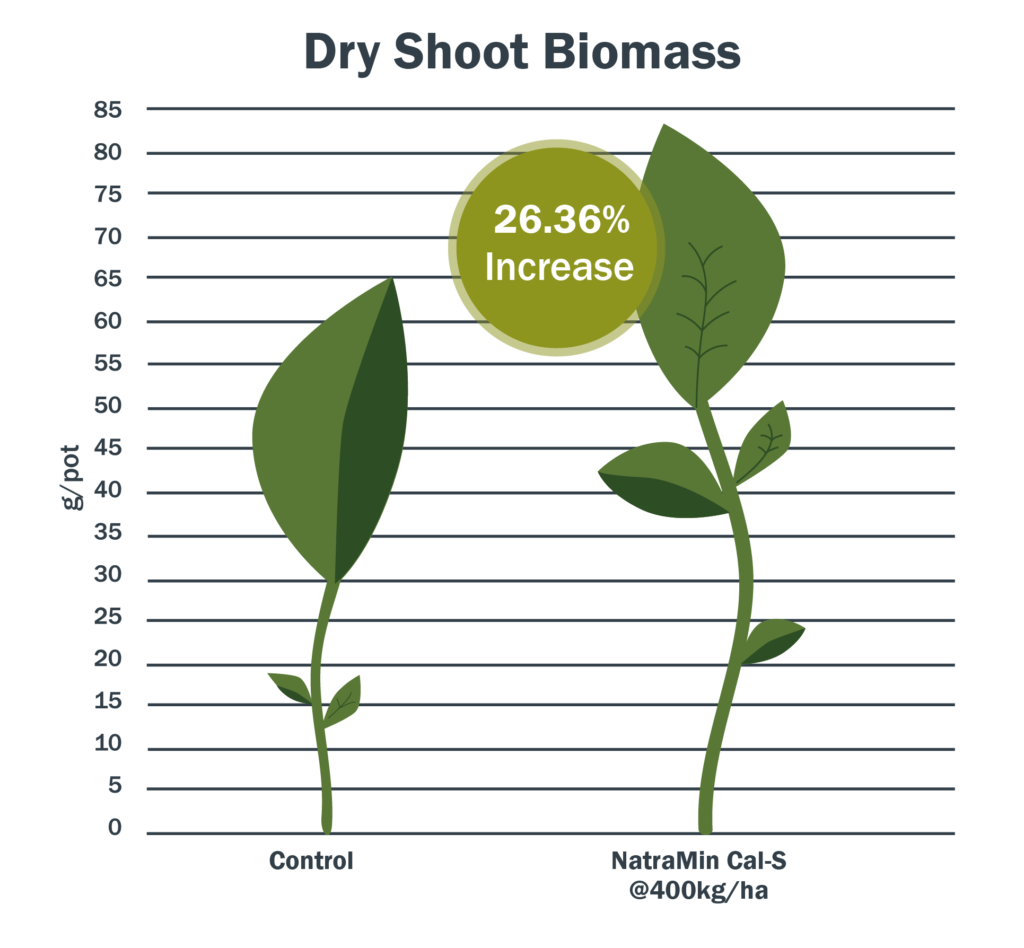University of Queensland – St Lucia Campus
Results from soil amendment trials at the University of Queensland have indicated what many farmers have reported over the years, NatraMin works! The replicated trial work have confirmed that NatraMin can assist soil physical properties and boost plant growth while adding value to an important asset – your soil.
Here is just a snap shot of some of the data that will no doubt be of interest to anyone on the land.
Plant Available Water Content
Four weeks after NatraMin Cal-S had been applied, the Plant Available Water Content (PAWC) was 7.6% higher compared to the gypsum treatment and soil that had no amendment applied (control). This increased soil moisture levels is likely to have contributed to increased root and plant growth.
Plant available water content is the difference between field capacity (commonly referred to as water holding capacity) and permanent wilting point (level where plants can no longer access moisture from the soil).
As you can see from the graphs, there was an increase of 7.6% PAWC in the soils treated with NatraMin Cal-S.


It appears there is an interaction of NatraMin within the soil that improves soil porosity – giving it space to hold more moisture… or in other words, increasing the ‘size of the bucket’ within the soil.
What can this mean for you?
With increased moisture holding capacity in your soil:
- Plants can ‘hold-on’ longer between rain events and in dry land areas, this could be the difference between getting a crop off… or not.
- For irrigated areas, irrigation frequency and duration can often be reduced… saving both time and money.
The bigger the bucket, the more moisture is available for plant growth.
Increased Root Biomass and Plant Growth
An even more pronounced difference was evident under the soil surface, with the 400kg/ha NatraMin Cal-S treatment recording an increase of over 39% in dry root biomass in comparison to the control soil. Increased root growth has many significant benefits not only for the current plant, but also for on-going soil health.
In the same replicated trial, plants grown in soil treated with NatraMin Cal-S yielded a 26.36% increase in dry shoot biomass as compared to the control (all soils had baseline NPK fertiliser applied as well). This extra growth could be of commercial significance and enhance the returns for producers.


These results indicate that by using NatraMin, it is possible to get a return on investment short term and add long-term benefits to your soil structure.
NatraMin appears to Stabilise Organic Carbon and soil pH
Soil respiration data captured throughout the trial has also indicated that NatraMin appears to stabilise soil organic carbon and decrease the release of CO₂ from soil.
This is obviously very important in today’s environment as maintaining and building soil organic carbon has been linked to many agronomic benefits such as improved soil health and fertility.
NatraMin also appeared to play a role in buffering soil pH, particularly in acidic soils. This is even more interesting when considered in conjunction with the reduced CO₂ release from the soil respiration work. Unlike using traditional treatments such as Lime (Calcium Carbonate) which actually releases CO₂, silica-based products such as NatraMin can improve pH without the CO₂ release.
Other analyses in terms of nutrient availability, pH buffering and soil structural measurements have produced some positive data to this point in time, particularly given the relatively short timeframe of the trial.
For further information, please contact AgSolutions on 1800 81 57 57.
